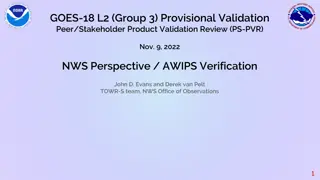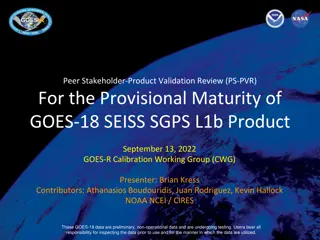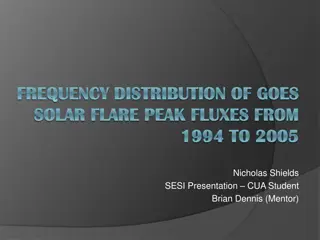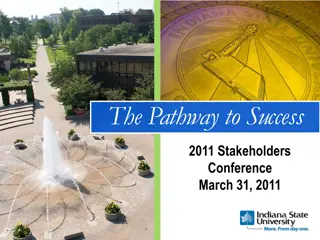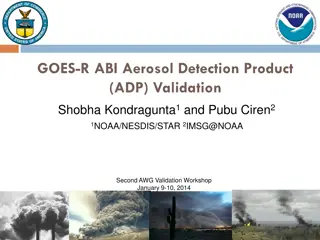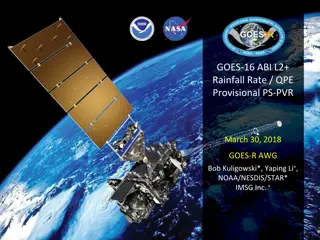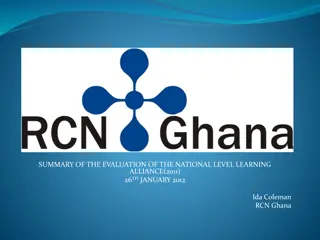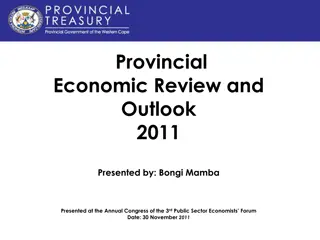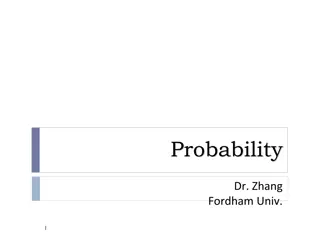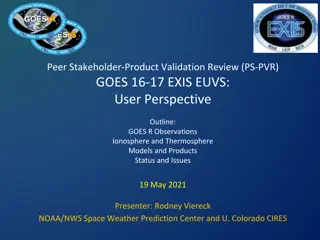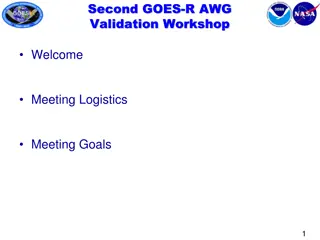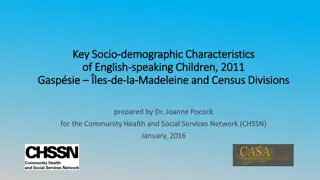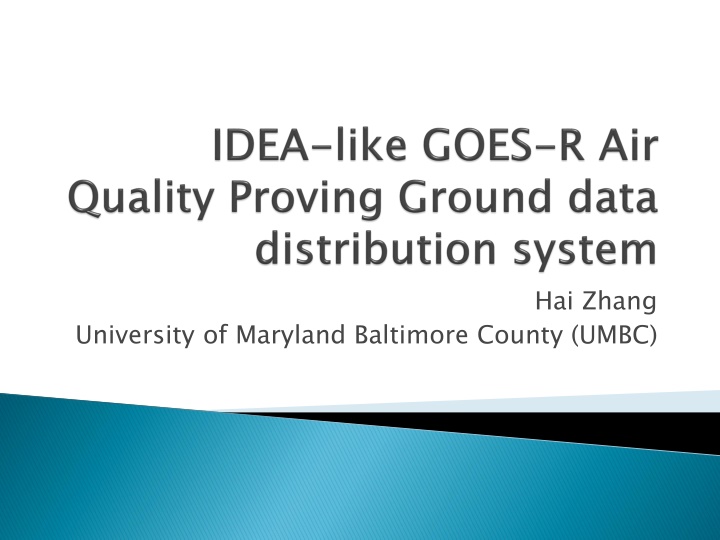
Real-time Air Quality Data System Development Using GOES-R
This project focuses on developing a near-real-time air quality data distribution system using GOES-R satellite data. The objectives include collaborating with the AQPG team, building case studies, and improving aerosol retrieval algorithms. Techniques involve utilizing geostationary satellite datasets for algorithm testing and performance enhancement.
Download Presentation

Please find below an Image/Link to download the presentation.
The content on the website is provided AS IS for your information and personal use only. It may not be sold, licensed, or shared on other websites without obtaining consent from the author. If you encounter any issues during the download, it is possible that the publisher has removed the file from their server.
You are allowed to download the files provided on this website for personal or commercial use, subject to the condition that they are used lawfully. All files are the property of their respective owners.
The content on the website is provided AS IS for your information and personal use only. It may not be sold, licensed, or shared on other websites without obtaining consent from the author.
E N D
Presentation Transcript
Hai Zhang University of Maryland Baltimore County (UMBC)
Objectives Prepare near-real-time GOES-R air quality data distribution system for air quality community Collaborate with GOES-R Air Quality Proving Ground (AQPG) team on user training and preparation for GOES-R air quality data Techniques Collaborate with GOES-R AQPG , build GOES-R proxy dataset case studies and near-real-time data from model simulation and ABI aerosol retrieval algorithm Revise IDEA system to use the GOES-R ABI proxy dataset. Develop a new aerosol type component in the system. Apply synthetic natural color imagery. Air quality index (AQI) map from AOD Test the system using proxy dataset. Analyze system ability to handle high data volume from GOES-R. Demonstrate the system to the air quality end users. Acquire user feedbacks and improve system further. Objectives Techniques 2
Objectives Test Multi-Angle Implementation of Atmospheric Correction (MAIAC) algorithm performance in geostationary satellite geometry Improve the ability of GOES-R aerosol retrieval algorithm over bright surfaces Objectives Techniques Use geostationary satellite dataset SEVIRI data Simulated GOES-R proxy data Can apply multichannel aerosol retrieval in the geostationary satellite geometry. Two methods will be explored: MAIAC When apply MAIAC on SEVIRI data, use 1.6 m channel for 2.1 m channel. Assume 1.6 m channel is not affected by aerosol, retrieve BRDF (Bidirectional Reflectance Distribution Function) for that channel. Assume 0.6 m channels have the same BRDF shape as 1.6 m channel and retrieve BRDF in that channel through time series analysis. Retrieve AOD. Apply modification on surface types where the BRDF shapes are not the same in the three channel Use daily average AOD and TOA reflectance time sequence to retrieve surface BRDF BRDF shapes are not necessarily the same for the three channels Daily average AOD are obtained from MAIAC in good retrieval geometry Retrieve BRDF separately for each channel The algorithm will be tested and results will be compared against AERONET retrievals. Case studies such as Sahara dust storm and European pollution Techniques 3
Current GOES only have one visible channel available for aerosol retrieval In the new algorithm, we retrieve surface BRDF using daily average AOD and GOES channel 1 TOA reflectance Three day time series are used for BRDF retrieval Daily average AOD is obtained from MODIS in the eastern US and MAIAC for GOES in the western US The AOD retrieval results are more accurate than GASP and MAIAC for GOES.


